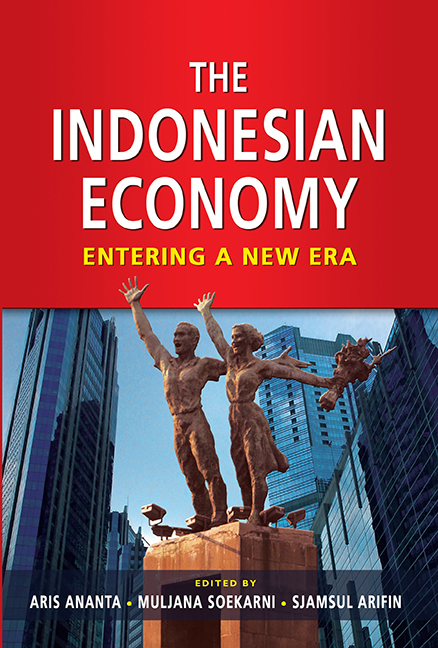Book contents
- Frontmatter
- Contents
- List of Tables
- List of Figures
- Message from the Deputy Governor of Bank Indonesia
- Message from the Director of the Institute of Southeast Asian Studies
- Foreword
- Preface
- Contributors
- PART I INTRODUCTION
- PART II MONETARY AND FISCAL POLICIES
- 3 The Dynamics of Monetary Policy
- 4 The Financial System: Balancing Financial Stability and Economic Growth
- 5 Economic Crisis and Fiscal Policy Management
- 6 Understanding the Role of Fiscal Stimulus in Maintaining Economic Resilience
- PART III DOMESTIC ECONOMY
- PART IV SEARCH FOR NEW PARADIGMS
- Index
4 - The Financial System: Balancing Financial Stability and Economic Growth
from PART II - MONETARY AND FISCAL POLICIES
Published online by Cambridge University Press: 21 October 2015
- Frontmatter
- Contents
- List of Tables
- List of Figures
- Message from the Deputy Governor of Bank Indonesia
- Message from the Director of the Institute of Southeast Asian Studies
- Foreword
- Preface
- Contributors
- PART I INTRODUCTION
- PART II MONETARY AND FISCAL POLICIES
- 3 The Dynamics of Monetary Policy
- 4 The Financial System: Balancing Financial Stability and Economic Growth
- 5 Economic Crisis and Fiscal Policy Management
- 6 Understanding the Role of Fiscal Stimulus in Maintaining Economic Resilience
- PART III DOMESTIC ECONOMY
- PART IV SEARCH FOR NEW PARADIGMS
- Index
Summary
INDONESIA'S FINANCIAL SECTOR IN THE ERA OF GLOBALIZATION
As shown in Figure 4.1, commercial banks own the largest share (79.5 per cent) of the total assets of Indonesia's financial institutions. Like in many other countries, the domination of the banking industry has become a challenge in Indonesia, especially during the recent global financial crisis when the world economy was slowing down and uncertainty was rampant. The increase in banks’ aversion to risk, and the lack of banks’ confidence in the economy's prospect have made securing funding difficult for the private sector. This in turn has had an impact on the performance of the banking sector itself as well as the overall economic growth of the country.
During the crisis, the pressures in the global financial market (due to the lack of liquidity and disintermediation) triggered and accelerated the “deleveraging process” in financial institutions. Financial institutions sought an expansion in funding sources to compensate for the lack of interbank funding and securitization activities. Several banks sold their liquid assets to absorb off-balance sheet losses to mitigate financial risks, as well as to strengthen their liquidity reserves.
The deleveraging process in the United States was reflected by the drastic drop in assets acquired by asset backed securities (ABS) issuers and main broker-dealers since mid-2007. The International Monetary Fund (2008) estimated that the deleveraging process would continue until the end of this decade.
Total sales of liquid assets from mid-2007 to Q3-2008 is estimated at $580 billion, with 95.0 per cent of this done by banks in North America and Europe. Consequently, there was an increase in banks’ capital of about $430 billion during this period. Also, the deleveraging process mainly involved only a few banks (twenty of the biggest banks contributed to 75.0 per cent of the total sales).
The sale of liquid assets and increase in capital did not only occur in the United States and Europe, but in Asia as well. However, compared with many other countries, Indonesia's financial sector has been relatively “immune”.
This phenomenon raised up two “schools of thought” on the issue of financial stability versus economic growth. One argues that this situation shows that Indonesia's financial sector is relatively robust (not affected by) against global economic shocks or even a global economic crisis.
- Type
- Chapter
- Information
- The Indonesian EconomyEntering a New Era, pp. 107 - 131Publisher: ISEAS–Yusof Ishak InstitutePrint publication year: 2011

